The temples in Guntur are a testament to the region’s deep spiritual and cultural roots. Each temple tells a unique story through its architecture, legends, and religious practices, reflecting the rich heritage of Andhra Pradesh. From ancient structures with historical significance to vibrant centres of devotion, these temples attract numerous visitors seeking both spiritual solace and a connection to the past. Exploring these sacred sites offers an enriching experience, highlighting the profound legacy of Guntur’s religious traditions. Guntur temples act as cultural centres, maintaining ancient traditions and nurturing a strong sense of community among devotees.
10 Temples In Guntur
Here’s a list of ten serene temples in Guntur that you should visit for a spiritual retreat.
1. Kotappakonda Temple
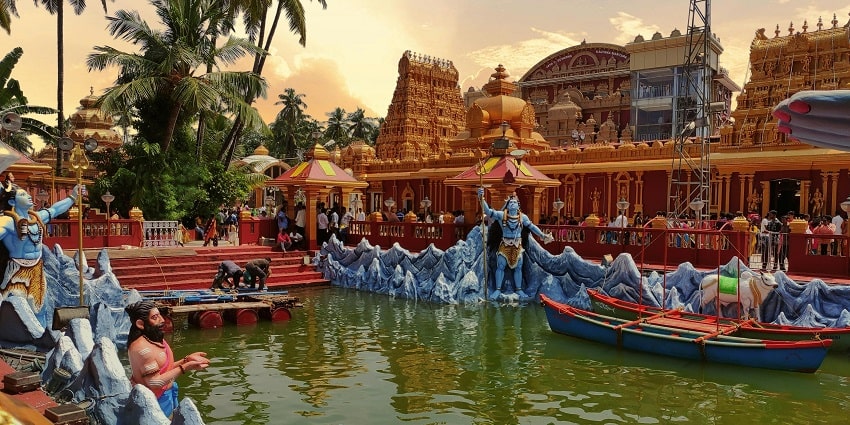
Photo: Pratheek K / Pexels / Image For Representation Only
Kotappakonda, or Sri Trikoteswara Swamy Temple, a popular temple in Guntur, is 20 km from Narasaraopet. Known for its three peaks and panoramic views, it attracts thousands during Mahashivaratri. The temple’s mythological significance includes the legend of Anandavalli and Lord Jangama Devara. Its Veda Patasala, preserving UNESCO-recognized oral traditions, adds to its cultural importance. The site’s history traces back to sage Agastya. The hill’s vibrant Thirunallu festival features colourful decorations and cultural activities, enhancing its appeal.
Best Time To Visit: October to March
Timings: 6 AM – 1 PM and 3 PM – 8 PM
Suggested Read: Places To Visit In Horsley Hills
2. Panakala Lakshmi Narasimha Swamy Temple
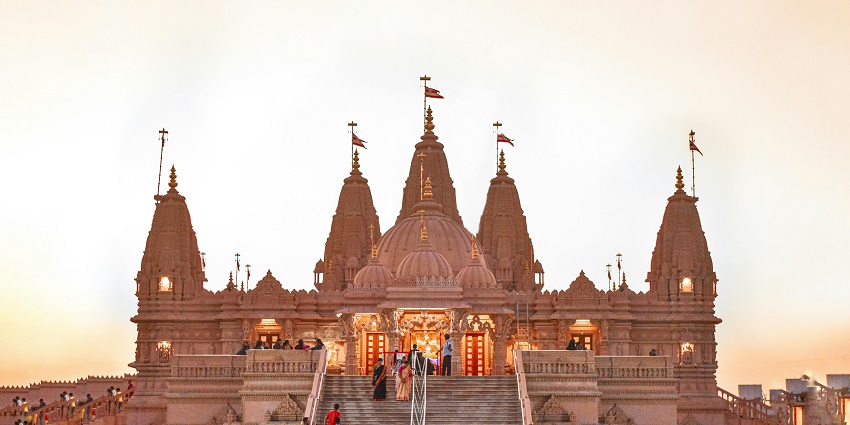
Photo: Sourabh Narwade / Pexels / Image For Representation Only
Panakala Lakshmi Narasimha Swamy Temple in Mangalagiri, dating back to the Satavahana period, is renowned for its unique tradition of offering jaggery water to the deity. The self-existent god’s mouth, covered by a metal face, drinks the offering with an audible gurgling sound. Remarkably, no ants are found despite the jaggery. A legend connects this to neutralising volcanic sulphur. Nearby, the Lakshmi temple and an ancient cave add to the site’s allure. Devotees reach the temple via steps or ghat road.
Best Time To Visit: October to March
Timings: 7 AM – 3 PM
3. Sakshi Bhavanarayana Swamy Temple
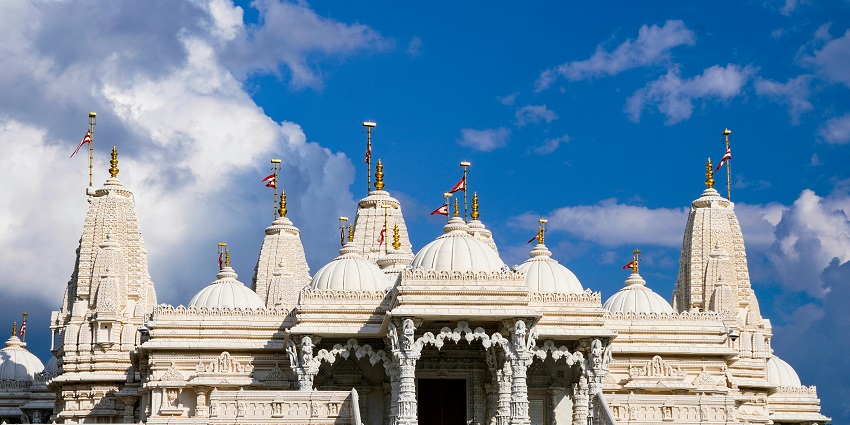
Photo: Koushalya Karthikeyan / Pexels / Image For Representation Only
Sakshi Bhavanarayana Swamy Temple in Ponnur, built by King Nalaparaju in the 11th century AD and later renovated by Chola King Kulothunga, is dedicated to Lord Vishnu. Located 28 km from Guntur, it equals 108 Tirupati temples. The temple, known for its magnificent architecture and 60-foot Hanuman statue, celebrates the grand Rathotsavam. Legends say Lord Vishnu acted as a witness for a devotee’s promise here, hence the name Sakshi Bhavanarayana Swamy.
Best Time To Visit: October to March
Timings: 6 AM – 8 PM
Suggested Read: Top Places To Visit In Bhadrachalam To Explore Telangana
4. Sri Anjaneya Swamy Temple
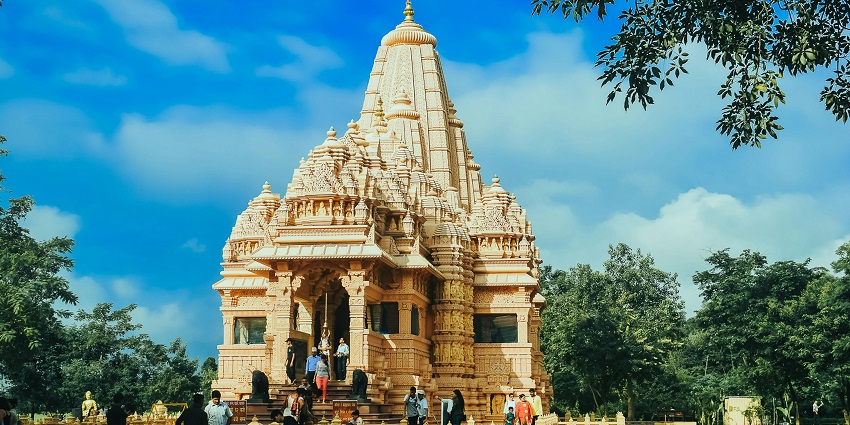
Photo: kabita Darlami / Pexels / Image For Representation Only
The Sri Anjaneya Swamy Temple in Ponnur, Andhra Pradesh, is a historic site built in 1969 by Kota Jagannadha Swamy. Known for its serene ambience and 24-foot Hanuman statue carved from a single granite piece, the temple also features a 30-foot Garuda shrine. Rooted in Ramayana legends, it attracts many devotees, especially on Saturdays, celebrating Hanuman’s strength and devotion. The temple’s unique architecture is a symbol of faith. It is one of the famous temples in Guntur.
Best Time To Visit: October to March
Timings: 5 AM – 8:30 PM
5. Ramanama Kshetram
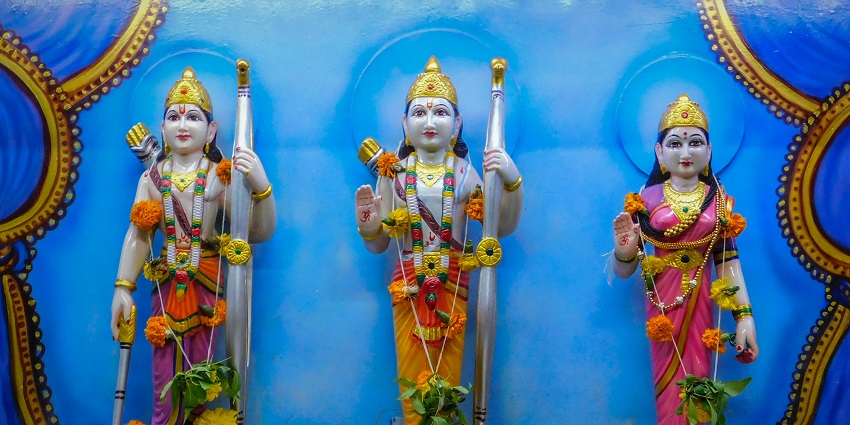
Photo: Sonika Agarwal / Unsplash / Image For Representation Only
Ramanama Kshetram is a serene pilgrimage site dedicated to Lord Rama. It holds deep significance for Sri Ragam Anjaneyulu Garu, a devoted follower whose life was profoundly shaped by Lord Rama. His son, Sri Ragam Rama Piccayya Garu. The temple’s walls are uniquely built with Drama Koti books, adding a special touch to its spiritual ambience. The hall, where Rama’s name is chanted continuously, offers a spiritually uplifting experience, believed to bestow great blessings and spiritual growth. It is one of the best temples in Guntur.
Best Time To Visit: October to March
Timings: 6 AM – 12 PM and 4 PM – 8 PM
Suggested Read: Places To Visit Near Tirupati Within 100 Kms For A Short Vacation
6. Sri Sahasralingeshwara Swamy Temple
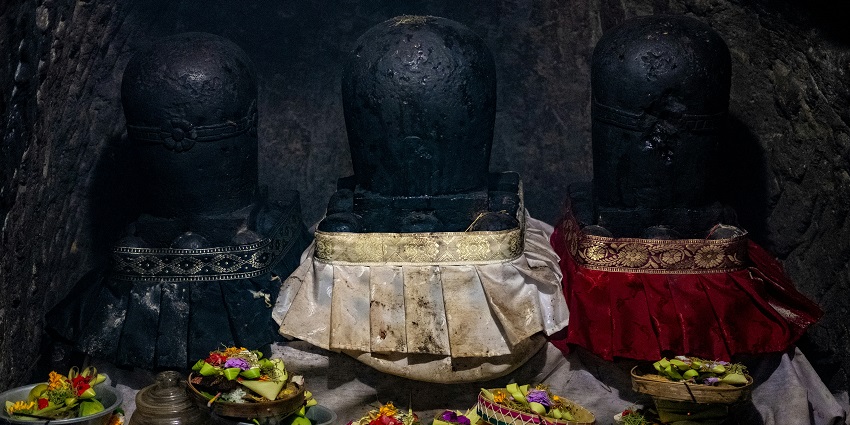
Photo: Bhaumik Kaji / Unsplash / Image For Representation Only
Sri Sahasralingeshwara Swamy Temple, renowned for its thousand Shiva Lingas is located in Ponnur, 30 km from Guntur on the G.B.C. Road. Established in 1938 by Sri Kota Jagannadha Swamy, this temple is the oldest temple in Guntur which sits amid serene surroundings. The temple complex includes Sri Veeranjaneya Swamy Temple and was funded through donations and a 63-acre wetland. The temple is famed for its annual Maha Shivaratri festival and is believed to grant liberation from the cycle of birth and death.
Best Time To Visit: October to March
Timings: 6 AM – 11 AM and 6 PM – 8:30 PM
7. Pedakakani Shiva Temple
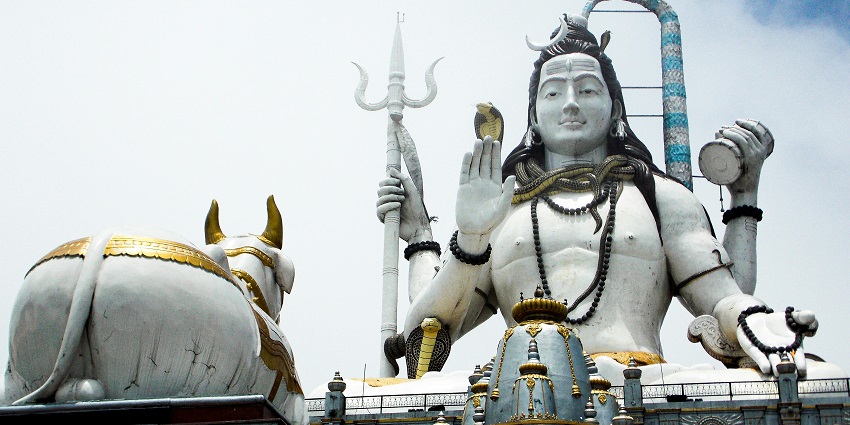
Photo: spandan pattanayak / Unsplash / Image For Representation Only
Pedakakani Shiva Temple, is renowned for its ancient Shiva Linga which was constructed during the rule of the Vijayanagara king Krishnadevaraya. The temple, set in peaceful surroundings, attracts devotees seeking solace and spiritual fulfilment. Its rich history and legends make it a significant site, especially during festivals like Shivaratri when the temple becomes a vibrant centre of religious activity. The temple is also linked to Kakani Malleswara Swamy Temple, known for its spiritual significance.
Best Time To Visit: October to March
Timings: 5 AM – 1:30 PM and 4 PM – 8:30 PM
Suggested Read: Waterfalls In Visakhapatnam
8. Amaravathi Amaralingeswara Swamy Temple
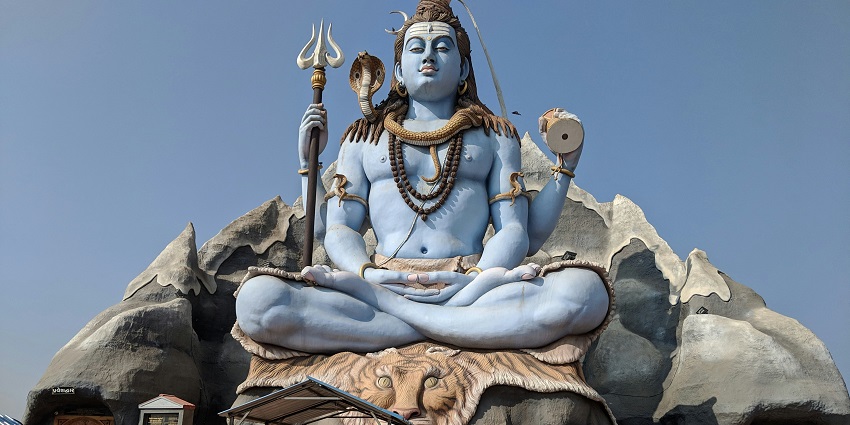
Photo: Gúŕú śàí Pŕàkèśh / Unsplash / Image For Representation Only
The Amaravathi Amaralingeswara Swamy Temple, a key Pancharama Kshetra, is located on the southern bank of the Krishna River in Amaravati, Andhra Pradesh. Established in the 1930s by King Vasireddy Venkatadri Naidu, the temple features a towering 15-foot Shiva Lingam and Dravidian-style Gopurams. Renowned for its legends, including the battle with the demon Tarakasura, the temple attracts devotees seeking salvation. Key festivals like Maha Shivaratri and Navaratri make the temple a lively spiritual centre.
Best Time To Visit: October to March
Timings: 6 AM – 1:30 PM and 4 PM – 8 PM
9. Chaturmukha Brahma Lingeshwara Swamy Temple
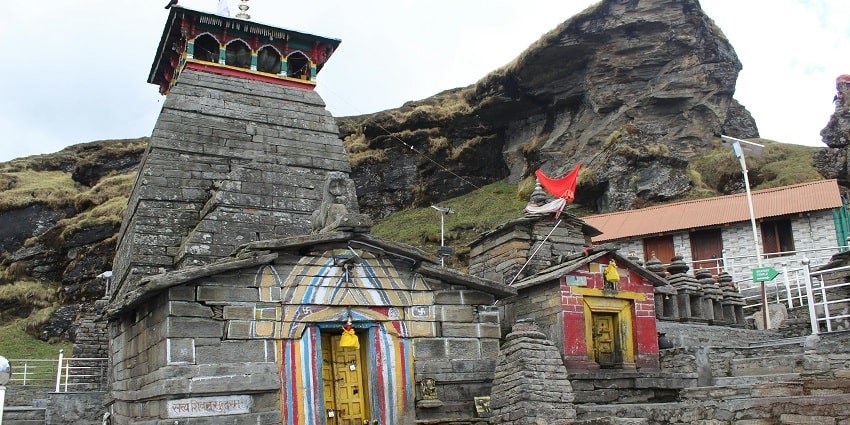
Photo: Vikas Bhandari / Pexels / Image For Representation Only
The Chaturmukha Brahma Lingeshwara Swamy Temple in Chebrolu, Andhra Pradesh, is one of the rare temples dedicated to Lord Brahma. This stunning temple, situated on a tank, requires devotees to cross a small bridge to reach the shrine. Unique for its four-faced depiction of Brahma on a Shiva Lingam, the temple is surrounded by shrines to Shiva, Vishnu, and Shakti. Nearby, you’ll find the ancient Sri Adikesava Swamy Temple and the historical Sri Bhimeswara Swamy Temple.
Best Time To Visit: October to March
Timings: 6 AM – 8 PM
Suggested Read: Things To Do In Araku Valley
10. Uppalapadu Chennakesava Swamy Temple
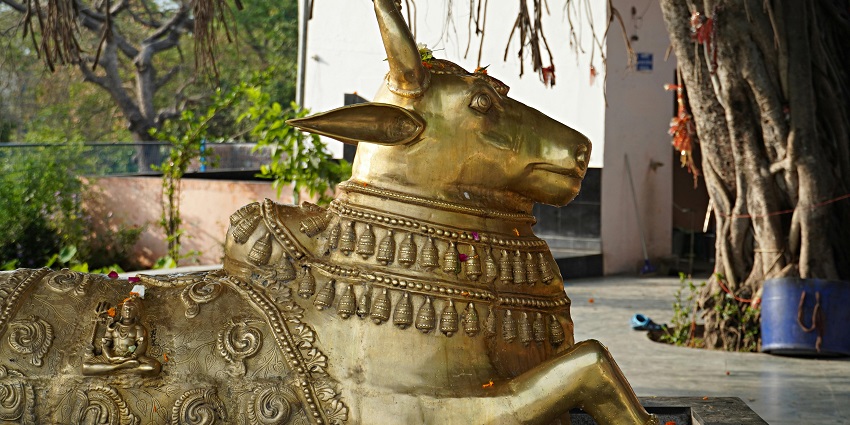
Photo: Arvind Aditya / Pexels / Image For Representation Only
The Uppalapadu Chennakesava Swamy Temple in Andhra Pradesh is a historic marvel dedicated to Lord Vishnu. Built during the Vijayanagara Empire, the 13th-century temple is renowned for its intricate carvings and stunning architecture. One of the biggest temples in Guntur, it features a main shrine housing a beautiful statue of Lord Chennakesava and a gallery adorned with sculptures of Hindu deities. The annual Brahmotsavam festival attracts many devotees, making it a vibrant centre of spiritual activity. The temple’s serene courtyard provides a peaceful retreat for visitors.
Best Time To Visit: October to March
Timings: 6 AM – 8 PM
These sacred sites, steeped in history and spirituality, offer a unique glimpse into Andhra Pradesh’s rich cultural heritage. Whether you seek solace, historical insights, or vibrant festivals, each temple provides a distinctive experience. TripXL ensures you explore these divine destinations comfortably and comprehensively. Discover the spiritual and cultural treasures of Guntur with TripXL’s expert guidance as your pilgrimage to these sacred sites will be a seamless and unforgettable adventure.
Cover Photo: Naveen Raj Dhanapal / Unsplash / Image For Representation Only


 WhatsApp
WhatsApp
 Twitter
Twitter









